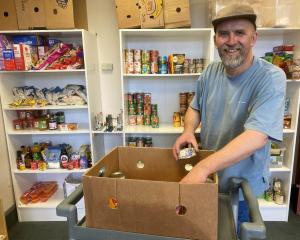
Minister of Health Simeon Brown recently announced a new 24/7 digital health service offering virtual consultations with New Zealand-registered doctors and nurses "anytime, anywhere".
The service connects patients to clinicians through trusted providers using secure digital technology.
Doctors and nurse practitioners will be able to assess symptoms, diagnose conditions, prescribe medications and provide referrals — all from wherever the patient is.
"This is about making sure Kiwis can get the medical help they need when they need it, especially when they can’t get a timely appointment with their regular general practitioner, or outside normal clinic hours," Mr Brown said.
"It also helps ease pressure on emergency departments by treating non-urgent issues earlier and in the right setting."
It would ensure care was available when and where it was needed, helping to bridge the gap when traditional access to a general practitioner was not possible, he said.
The digital service gave people greater access to the care they needed, but did not replace the critical role of general practitioners, who were responsible for their patients’ continuity of care.
"That is why providers will be required to send clinical notes back to a patient’s GP after an appointment.
"At the same time, we are backing GPs with a record up-to-14% funding boost this year to support the critical work they do in our communities," Mr Brown said.
WellSouth chief executive Andrew Swanson-Dobbs said primary care was in crisis in many parts of the Southern region and across the country.
"We continue to hear about clinicians working unpaid, about doctors unable to retire as there is no replacement."
"This is compounded in our rural parts," Mr Swanson-Dobbs said.
About half of the general practices in Otago and Southland are rural or at least a 50-minute drive from a hospital.
Existing services had been undermined, both clinically and financially, by telehealth providers, he said.
"Investment is shifted to a service that effectively takes patients away from their own GPs.
"To make matters worse, telemedicine is pulling GPs and nurses from practices for these telehealth roles."
Telehealth was contributing to the issue and should not be seen as an alternative to a superior face-to-face service, he said.
"If you want to reverse the trend of too few GPs, hire more GPs, fund the existing GPs adequately."
As the primary health organisation for Otago and Southland, WellSouth had always maintained that investment in primary care should first and foremost support the workforce on the ground in existing general practices.
"Our rural communities especially need clinicians to keep their practices sustainable."
While telemedicine was an important part of primary care, more investment in people was needed, he said.
"That is why at WellSouth, we are investing in building and sustaining our local general practice workforce, through new investment in training and supporting our GP registrars and new nurse practitioners, in addition to our existing nursing workforce and healthcare assistants."
Mr Brown said that, as minister of health, his priority was to ensure all New Zealanders had access to timely, quality healthcare.
"That is why the government has invested a record $16.68 billion in health over three budgets to bring down wait lists, employ more frontline health workers and ensure we have the health infrastructure Kiwis need.
"This government has been clear that we want to see more healthcare delivered in the community and ensure that hospitals have capacity to provide planned treatments and emergency procedures.
"To do this, we need greater funding of primary and community healthcare."
The recent announcement of an agreement between the government and the University of Waikato to establish a new medical school may provide some welcome news.
WellSouth clinical director Dr Carol Atmore said training doctors with a focus on primary care and rural health was important for the country.
"The evidence shows that if you train people from rural backgrounds in rural settings both at undergraduate level and once qualified as doctors, those doctors are much more likely to settle and work in rural communities in the longer term.
"Nearly half of our communities in Otago and Southland are rural and this is where the biggest workforce issues sit across the country."
While there was no guarantee the graduates would end up working in the South, it was hopeful that having about 120 graduates going through the new primary care and rurally focused training programme at the University of Waikato might help alleviate some of those workforce pressures for Otago and Southland in the long term, Dr Atmore said.














